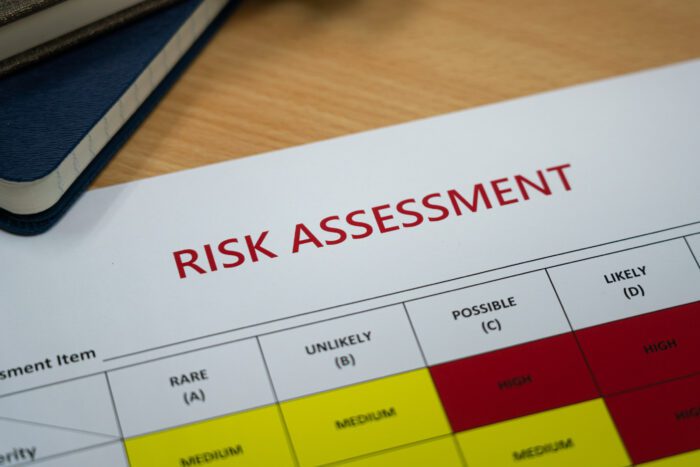Here, we discuss a fundamental aspect of business continuity planning and operations: emergency preparedness plans.
A comprehensive business continuity plan includes backing up essential data, designating a secondary operation location, and preparing for utility disruptions during and after a disaster, including natural, technology-related, and human-caused hazards. Medical assistance and preparation play a critical role in ensuring the effectiveness of emergency response plans.
These plans aren’t just an optional checkbox but are, in fact, pivotal for the seamless functioning and survival of any business, especially small and medium-sized enterprises (SMBs).
Understanding the Significance of Emergency Preparedness Information
Imagine a sudden natural disaster or a cyberattack that causes your systems to malfunction. How you respond to the situation can either strengthen or threaten your business.
Emergencies aren’t just disturbances; they carry the potential to inflict irreversible harm. This is precisely where emergency preparedness plans come into play. These plans are akin to strategic blueprints that navigate you through the tumult, enabling you to identify how to shield your operations, reputation, and, ultimately, your financial stability.
The gravity of these plans is amplified for SMBs. Unlike their larger counterparts, SMBs often operate within narrower financial constraints and possess minimal margin for error.
The cascading impacts of a significant crisis can be catastrophic, potentially leading to closure. Therefore, emergency preparedness isn’t merely a choice; it’s an indispensable strategy for surviving a catastrophic disaster.

Laying a Strong Foundation with Effective Emergency Plans for Technology-Related Hazards
Creating a meticulously designed emergency preparedness plan involves harmonizing various elements to establish a comprehensive approach to managing crises.
Ensuring the security of health systems is crucial, as it involves training frontline healthcare providers to respond to evolving threats.
Clear communication strategies are at the forefront of these elements. Understanding who assumes specific responsibilities and how information flows is crucial during tumultuous times.
This clarity becomes even more crucial when dealing with scenarios ranging from natural disasters, equipment and technological breakdowns, public relations challenges, and human-caused hazards. Utilizing a company intranet as an essential internal communication tool can facilitate sharing of emergency preparedness information with employees, ensuring two-way communication and timely updates.
The cornerstone of this preparedness plan is the presence of a designated team proficient in swift and precise action. Such a team can prove instrumental in minimizing damages, regardless of whether you’re a company grappling with a natural catastrophe, a technological glitch, or a public relations crisis.
Adapting these plans to cater to the unique requirements of small and medium-sized businesses (SMBs) is pivotal. While these enterprises might lack the luxury of a specialized emergency management team, it doesn’t translate to neglecting preparedness or risk itself.
On the contrary, it necessitates an innovative approach that’s both agile and resource-conscious.
This innovative approach involves analyzing potential hazards, risks, and vulnerabilities inherent to your business. Doing so allows you to tailor a plan that efficiently addresses your specific challenges while maximizing the resources at your disposal.
In essence, it’s about crafting a dynamic and effective strategy that reflects the distinct nature of your SMB and the environment in which it operates. Incorporating emergency preparedness information into various internal communication channels, such as newsletters, intranet updates, and communication trees, ensures that employees are well-informed and supported during disasters.
Unlocking the Beyond of Crisis Management with a Business Continuity Plan
In emergency preparedness and emergency plans for the business, a hidden treasure trove of advantages stretches far beyond simply managing crises. Unveiling these benefits often goes unnoticed, yet they possess the potential to reshape the very fabric of your business.
Providing essential services, such as trauma care, is critical in challenging environments. It is also crucial to include emergency supplies in your preparedness plans. These supplies ensure that both life-sustaining and lifesaving resources are available, enhancing safety and recovery during man-made and natural disasters, including human-caused hazards.
Imagine your employees realizing their safety and well-being are paramount in your operational framework. It’s more than a reassurance – it’s the realization that their welfare has been intricately woven into the very fabric of your organization.
And here’s where the magic unfurls: heightened morale isn’t just an intangible concept; it’s a catalyst for elevated productivity. When your team feels genuinely valued, their motivation is renewed, spurring them to go the extra mile.
These preparedness plans also powerfully affect your external relationships. Imagine customers and stakeholders witnessing your unwavering readiness to face adversities head-on.
In a landscape where uncertainties are constant companions, the assurance of your readiness gives you an upper hand. It’s a competitive advantage that isn’t just grounded in strategies but fortified by your genuine dedication to preparedness.
In essence, these seemingly silent plans orchestrate a symphony of positive impacts. They foster a culture of safety, loyalty, and excellence within your organization while simultaneously projecting an aura of trustworthiness and stability outward.
It’s more than just a strategy; it embodies your commitment to weathering storms, protecting your people, and standing as a beacon of dependability in an ever-shifting world.

A Wealth of Resources and Tools at Your Disposal
A wealth of indispensable resources and tools awaits small and medium-sized enterprises seeking guidance and assistance crafting their emergency preparedness strategies. Government entities are prime sources, often providing tailored guidelines catering to diverse industries, including preparation for human-caused hazards. These resources encompass:
- Guidelines and Checklists: Government agencies furnish comprehensive guidelines and checklists encompassing various aspects of emergency preparedness. These documents outline step-by-step procedures, ensuring you cover all vital facets of your plan. Reviewing your insurance policies is crucial to prevent financial loss due to potential damages, interruptions, or disasters. Examples of Guidelines and Checklists: U.S. Small Business Administration “Prepare for Emergencies”
- Training Workshops and Webinars: Many governmental bodies conduct training workshops and webinars on emergency preparedness. These sessions provide valuable insights and facilitate direct interaction with experts, allowing you to clarify doubts and gain practical knowledge. These workshops often cover preparation for natural hazards such as floods, hurricanes, and earthquakes. Examples of Training Workshops and Webinars: FEMA - Training & EducationCenters for Disease Control & Prevention (CDC) - Education
- Case Studies and Best Practices: Governmental agencies often compile and share case studies and best practices from successful emergency management scenarios. Learning from real-world examples can provide invaluable insights into practical strategies and potential pitfalls to avoid. These resources also highlight the importance of protecting personal property and other business-related assets. Examples of Case Studies and Best Practices: FEMA Case Study LibraryHarvard Kennedy School Case Studies
- Emergency Preparedness Toolkits: Some entities offer downloadable toolkits containing templates, forms, and resources tailored to specific industries. These toolkits provide a comprehensive starting point, allowing you to customize and refine your plan effectively. They also address technology-related hazards, ensuring your systems and software are safeguarded. Examples of Emergency Preparedness Toolkits: U.S. Chamber of Commerce Guide Ready Toolkits for Business
Furthermore, the digital world boasts a plethora of data and resources, including:
- Online Communities and Forums: Virtual communities and forums dedicated to emergency preparedness foster discussions, allowing you to learn from the experiences and insights of peers in various industries.
- Industry-Specific Blogs and Publications: Numerous industry experts and organizations maintain blogs and publications on emergency preparedness. These sources provide up-to-date information, trends, and expert opinions.
- Emergency Alert Systems: Many governments operate emergency alert systems with real-time notifications about impending disasters or critical situations. These systems can be integrated into your preparedness plan to ensure timely communication. Incorporating a telephone calling tree can further enhance communication with employees during emergencies.
- Collaborative Platforms and Software: Online collaborative platforms and specialized software solutions facilitate efficient plan creation, updates, and management. These tools often offer templates, task tracking, and communication features that enhance plan effectiveness.
Incorporating these resources into your emergency preparedness and insurance plan can provide a well-rounded approach to ensuring your business’s safety and resilience.
Final Thoughts on Emergency Plans and First Aid Supplies
In an era of uncertainty, the value of emergency preparedness plans cannot be overstated. These plans yield various advantages, especially for SMBs, by preparing them for natural, technological, and human-caused hazards.
By allocating the essential time and effort to sculpt a responsive, adaptable, and efficient emergency preparedness plan, you’re embarking on more than just circumventing chaos – you’re fortifying the long-standing prosperity of your small business, too.
Hence, instead of idly awaiting unforeseen challenges, seize the present moment to construct the bulwark of preparedness. The survival of your business hangs in the balance.

Frequently Asked Questions (FAQ) About Business Preparedness
What is an emergency preparedness plan?
An emergency preparedness plan is a comprehensive strategy designed to anticipate, respond to, and recover from potential emergencies or disasters. It outlines procedures and responsibilities to ensure business continuity and minimize disruptions.
Why is emergency preparedness important for businesses?
Emergency preparedness is crucial for protecting employees, assets, and operations. It helps businesses mitigate risks, reduce downtime, and ensure a swift recovery, maintaining customer trust and operational stability.
What are the critical components of an emergency preparedness plan?
Key components include risk assessment, emergency response procedures, communication plans, resource allocation, employee training, and recovery strategies. Each component ensures a coordinated and effective response to emergencies.
How often should businesses update their emergency preparedness plans?
Businesses should review and update their emergency preparedness plans at least annually or whenever significant changes in operations, personnel, or external threats occur. Regular drills and training sessions are also essential.
Who should be involved in creating an emergency preparedness plan?
Creating an effective plan requires input from various stakeholders, including senior management, department heads, safety officers, and employees. External experts such as risk management consultants and local emergency services can also provide valuable insights.
What types of emergencies should a business prepare for?
Businesses should prepare for a wide range of emergencies, including natural disasters (e.g., earthquakes, floods), technological incidents (e.g., cyberattacks, power outages), and human-caused events (e.g., workplace violence, terrorism).
How can small businesses develop an effective emergency preparedness plan?
Small businesses can start by assessing risk, identifying critical operations, and establishing clear communication and response procedures. They can also leverage resources from government agencies and industry associations to provide guidance and support.
What role does communication play in emergency preparedness?
Communication is vital for ensuring everyone knows their roles and responsibilities during an emergency. A well-defined communication plan ensures timely and accurate information is shared with employees, customers, suppliers, and emergency responders.
How can businesses ensure their employees are prepared for emergencies?
Regular training sessions, emergency drills, and clear communication of emergency procedures are essential. Employees should know the location of emergency exits and assembly points and how to use emergency equipment.
What are the benefits of having a well-prepared emergency plan?
Benefits include enhanced employee safety, reduced financial losses, quicker recovery times, and maintaining customer trust and business continuity. A well-prepared plan demonstrates a business’s commitment to resilience and risk management.
What types of emergencies should a business prepare for?
Businesses should prepare for a wide range of emergencies, including natural disasters (e.g., earthquakes, floods), technological incidents (e.g., cyberattacks, power outages), human-caused events (e.g., workplace violence, terrorism), and widespread serious illness.
Preparing for health-related risks like pandemics is crucial as they can significantly impact operations and workforce availability.

Take Action Today to Protect Your Business
Don’t wait for disaster to strike. A comprehensive emergency preparedness plan ensures your business is prepared for any emergency.
Contact Us for a Consultation
📧 Email: mark.hope@asymmetric.pro
📞 Phone: (608) 410-4450
Schedule a Meeting
Click here to book a convenient time to discuss how we can help you develop a robust emergency preparedness plan tailored to your business needs.
About the author
Mark A. Hope is the co-founder and Partner at Asymmetric Marketing, an innovative agency dedicated to creating high-performance sales and marketing systems, campaigns, processes, and strategies tailored for small businesses. With extensive experience spanning various industries, Asymmetric Marketing excels in delivering customized solutions that drive growth and success. If you’re looking to implement the strategies discussed in this article or need expert guidance on enhancing your marketing efforts, Mark is here to help. Contact him at 608-410-4450 or via email at mark.hope@asymmetric.pro.

